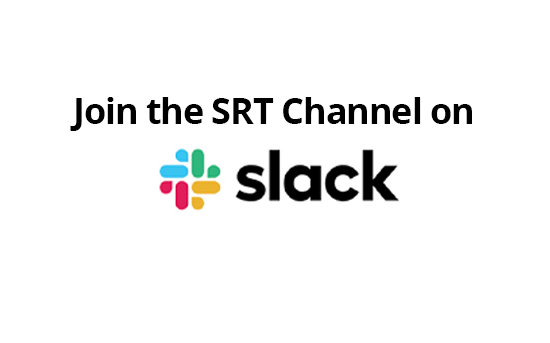Cloud Playout and so much more: How SRT is opening markets for broadcast software pioneer, Cinegy
This morning I had the pleasure of speaking with Lewis Kirkaldie at length about Cinegy. Cinegy is opening new markets with SRT Open Source. Here’s their story.
The company was founded in 2003 to create a new suite of next-gen broadcast playout, media asset management, multiviewer and other tools, on a tech stack that was next-gen at that time: common- off- the- shelf hardware and Windows software. The BBC was a foundational client of their new approach and remains one today, along with hundreds of others around the globe.
Cinegy’s market posture is unique. They’re unabashedly geared-up to serve smaller deployments, but just as ready to host large scale deployments like ingesting 200 time-critical professional sports feeds. And they’re busy planning a massive Multiviewer demo at IBC this Fall.
The company’s leadership has had their sights set on both virtualization and cloud since at least 2010. Lewis told me he recalled CEO Jan Weigner’s NAB presentation that year. He searched it up while we chatted, and then read, “The Virtual TV Station: Broadcast Operations as a Hosted Service. Yea, I remember this. Here, it reads, broadcast operations can be provided as a hosted, central service with signal delivery via IP. I remember that talk pretty well, actually.”
Today, Cinegy’s software is widely accessible for evaluation, with trial versions on their site and a strong presence on AWS Marketplace since 2015 and on Microsoft Azure Marketplace starting in 2017. So perhaps it’s not surprising that the company has gone all-in on SRT Open Source and the cloud business it enables.
“We’re very excited. Let me explain just one use case. Last year we announced a partnership with Globecast that enables them to launch channels in the cloud incredibly quickly, even 4K Ultra HD channels. So, they have all kinds of requests for that, some big, some small. And, we help them spin up channels quickly. It’s great. But, here’s the problem. You have to get the signal back to your datacenter. Or master control. And, it turns out, you’re going to pay a lot for that! Either proprietary software licenses, or negotiating to get a more reliable link, which probably won’t be reliable enough anyway. SRT Open Source solves all that. It just totally removes a big third-party component needed, a complexity, cost, it just removes a big pile of friction out of the equation.”
Lewis went on to describe how the cloud economic equation for playout isn’t the same simple economic decision that characterizes the video workflows where demand comes in bursts.
“When it’s a burst-able event, basically, the cloud is just a no brainer, cost-wise. That fact alone has driven so much cloud adoption. There, the numbers stack up easily, and you don’t fail with cloud. With playout, what happens is, someone actually needs to break out a spreadsheet. It’s headed in the cloud direction, but we’re still early in the cycle.”
For most broadcasters, there are important benefits to cloud. Servers require real estate, for one thing. Not to mention staffers to maintain things. And all media companies need the agility that comes with cloud. But, it’s a closer call, on balance, between cloud and on-prem in playout workflows. He went on:
“And so what SRT does for us here is by being an open source library that we have included straight into our products, that whole extra unknown is just gone. You don’t need to think about how reliable the network is between here and there. It just becomes guaranteed reliable.”
Lewis’s excitement about SRT Open Source notched even higher when we started talking about the dynamic state of the broader media and streaming ecosystems.
“Let me give you another great example. Streaming. We’ve been saying no, no, no, we’re not going to add HLS or MPEG DASH. We’ll wait for them to standardize. But, the streaming market, it continues to explode, and it’s clear now that it won’t standardize. In the past, we wanted nothing to do with that unholy mix of requests, RTMP, RTSP, HLS and MPEG, and by the way, the weirdness due to slowly broken and tweaked and incompatible implementations. It’s just a living nightmare.
But now, with SRT, we have a clear demarcation into Azure, or into Wowza, or wherever. SRT is our Rosetta Stone. I really love this part, because it allows us to get into business partnerships with others in the space. And by the way, that’s also a big attraction for us when it comes to Haivision’s SRT Hub.”
In May, Cinegy held a large customer event. They decided to stream it live. With SRT Open Source, it was simple to do. The feed went from Cinegy into Wowza and from Wowza straight onto the company’s Facebook page. It was clear from Lewis that this was a real ‘moment’ for the company.
“For us, SRT has become the lingua franca of dealing with all of this stuff. By using SRT as an interchange protocol, all of a sudden we’ve now got this flawless instant on-demand set of workflows to do so many things. Enterprise streaming, social streaming? No problem. Straight to Wowza, into Azure Media Services if needed, onto Facebook Live if we want. So many ecosystem partners available at the click of a few buttons. This just wasn’t open to us before. We are going to see so many more of these pop-up streaming engagements. It’s just so much easier now.”
The company will be at Stand 7.A01 at IBC 2019, showing off their complete suite of products featuring SRT Open Source.
If you’re heading to IBC and want to learn more about SRT, don’t miss the SRT Open Source Technical panel on September 15th in Amsterdam. This free session is designed for current and future SRT developers and will outline the applications and workflows that SRT solves, the technical roadmap, and implementation stories.


